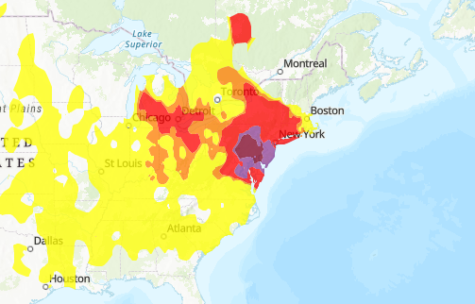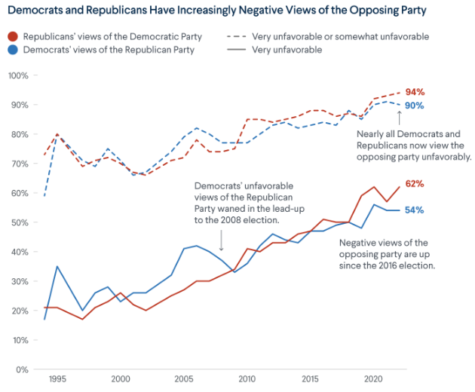4×4 schedule–a detriment or an aid?
October 8, 2020
After a grading period of balancing difficult classes like AP Calculus and time-consuming classes like IB English every single night, senior Samantha Burris firmly believes that the 4×4 schedule is excessively stressful and was the wrong decision.
“Not only will I have to take four more classes in the second [term], [in which] I’ll have three months to learn [new material] for the exams, I will also have to find my own time to go back and review all of the information that I was taught in the first term. I don’t think it makes any sense.”
Burris is far from the only student who feels the stress and workload of the new schedule. Senior Rafael Alfonso believes the 4×4 schedule has “lull[ed] me into this false sense of security that everything’s going to be okay. But I know that when the second term starts, I am going to be slammed with so much work from all of my IB classes… to learn everything that I am learning this term and then be learning all this other new material [will be extremely difficult].”
At the beginning of the school year, Alfonso was appointed by IB coordinator Helen Cox to a committee of IB seniors that has been working to answer PA students’ questions about the 4×4 schedule and even attempting to have it changed for IB students at PA. Alfonso, like many IB students, is worried that he might not get his diploma due to the compression of classes into a 4×4 schedule: “I have talked to some teachers, I’ve talked to Mrs. Cox, I’ve talked to some of our friends. They’ve all done some math and the math never points in our favor. It’s always like [we’re] losing so many hours, compared to what it’s supposed to be.”
The problem is not limited to IB students. One junior, granted anonymity by The Page, is taking several AP classes. “[4×4] has caused me to have more nightly work with less amount of time to finish it. Also, because the AP exams are not for a few months after we finish taking the class, I’m scared that I won’t get the best score I could on the exam, or just fail.”
She elaborated: “The 4×4 has definitely caused me more stress than I had during the A and B day schedules. I feel like because we only have one night for homework instead of two, it’s way more difficult to get it all done, while last year we were able to split it between two days if it was a more time-consuming assignment.”
Academics are not the only aspect of student life affected by the 4×4 schedule. The anonymous source also has to work and feels that “students who have jobs are feeling an even greater impact of the 4×4 schedule on their ability to finish work in time. For me, it’s been hard to find a balance between doing my homework and going to work.”
Although views of the 4×4 are mostly negative and critical, some students have found that they enjoy it. Sophomore Peyton Culpepper believes the 4×4 schedule has impacted her academic life positively.
“The workload is the same, so I don’t really think that changes,” said Culpepper. “I’m taking an online class this semester, so keeping up with four classes and taking an online class is easier than keeping up with eight and taking that class. Also, I’m only taking one AP class this year, so I’m not as concerned as other people might be about waiting for the test second [term].”
Culpepper is not the only one to recognize potential benefits. English and Theory of Knowledge teacher Brian Schwartz added the following: “There aren’t many positives, but I think that the 4×4 will result in stronger relationships between teachers and students. When you are able to see a teacher or student every day, you become more invested in their emotional or social wellbeing.”
Schwartz also provided insight on a teacher’s perspective of the 4×4 schedule.
“Four-by-four is compressing everything. In my English classes, this is especially tricky because teachers use the off-day of an A/B schedule to assign work, so now we are planning on assigning fewer novels because students only have half of the total number of school days to read works. We aren’t quite sure of the total number of required literature cuts, but it will probably be significant.”
Like the students he teaches, Schwartz feels that the overall workload has been increased because of the 4×4 schedule. “While teachers have fewer total classes, there’s a great pressure to turn feedback over quickly,” said Schwartz. “This is represented in my life by working longer hours and deeper into the evening to grade/plan. Just like students use that A/B off-day, teachers do too.”
The school board’s original intention for the 4×4 schedule was that by reducing the number of classes a student has in a term, it could reduce the spread of COVID-19. However, Burris does not believe it will help because “every student has a different schedule, every student has different classes, and the classes are spread all throughout the school anyway, so it doesn’t really make any difference.”
Similarly, Schwartz wrote that “4×4 would help reduce transmissions if we could teleport students from room to room and back home at the end of the day, but when all of this has to happen in the confines of a building with narrow halls and five-minute bell change timers, students are going to clump and cluster.”
Another reason Burris believes that the 4×4 schedule is ineffective is that the “[school board] didn’t check with the parents, they didn’t check with the teachers, they didn’t check with the students, all of which are the people being affected by it…I do not think they were thinking in terms of programs or special classes like AP or IB, because if they had, they would have realized that this does not work for those classes.”
Alfonso said of the stress generated by the 4×4 schedule, “It’s like an impending doom sort of stress. It’s like I know there’s a storm coming, but it’s a really sunny day out now, and so I’m able to enjoy the sunny day. But sooner or later, the storm is going to come, and it’s going to be very, very bad.”
Alfonso concluded, “The best solution would be if I could magically generate more time for all of us.”







